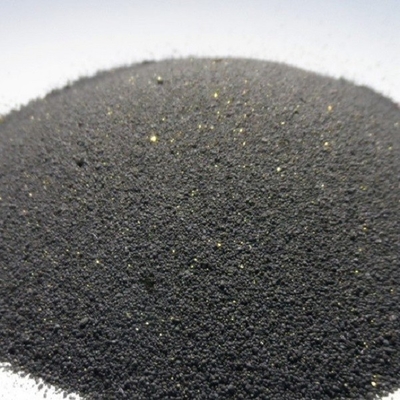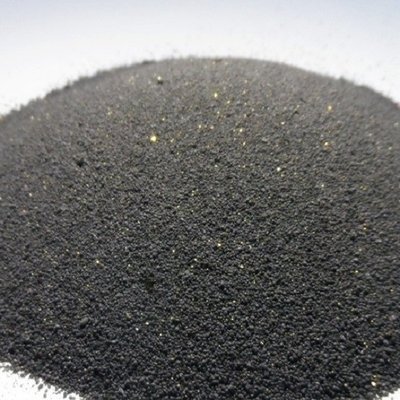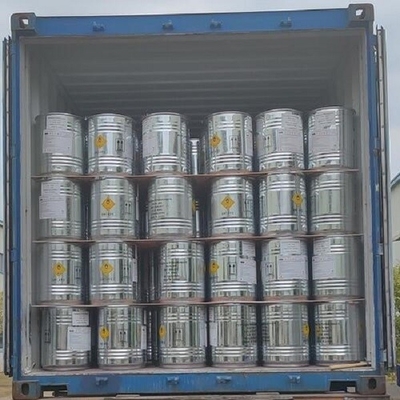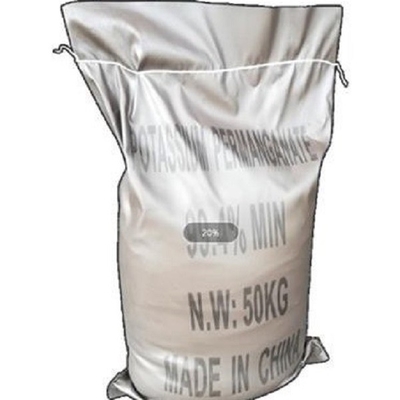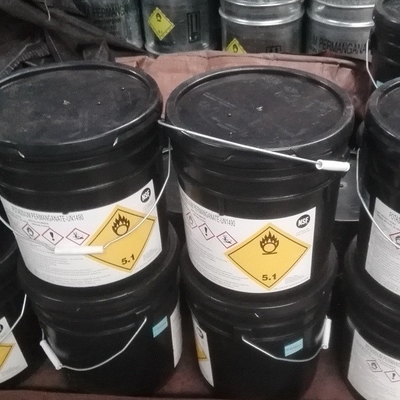Quicksand type Potassium permanganate 97.5% min CAS 7722-64-7 water treatment
Product Name:Potassium permanganate, manganous ash, PP powder, Potassium manganate (VII).
CAS: 7722-64-7
Molecular formula: KMnO4
Quality standard: GB/T1608-2017.
Application:The shape of type II product is quicksand, which is suitable for domestic water treatment and general industries.
In chemical production, potassium permanganate is widely used as oxidant, such as oxidant for saccharin, vitamin C, isoniazid and benzoic acid; Used as antiseptic, disinfectant, deodorant and antidote in medicine; In water purification and wastewater treatment, it is used as a water treatment agent to oxidize hydrogen sulfide, phenol, iron, manganese, organic, inorganic and other pollutants to control odor and decolorization. It is also used as bleaching agent, adsorbent, colorant and disinfectant. It is widely used in smelting, military industry, printing and dyeing, electroplating, electronics, medicine and other industries.
Production method
There are two common preparation methods:
(1) Manganese dioxide and potassium hydroxide obtained from ore are heated in air or mixed with potassium nitrate (to provide oxygen) to produce potassium manganate, and then electrolyzed with oxidant in alkaline solution to obtain potassium permanganate;
(2) It is produced by reaction of Mn ion with strong oxidants such as lead dioxide (PbO2) or sodium bismuth oxide (NaBiO3);
There are many industrial production methods:
(a) Open hearth furnace method: the production principle is to mix pyrolusite with high temperature alkali, and then calcine it in open hearth furnace after cooling and grinding. The process is fully open. Manganese dust, smoke and alkali fog cause great environmental pollution, high labor intensity, low thermal efficiency and high energy consumption. The Ministry of Industry and Information Technology (MIIT) Document No. 122 in 2010 requires that the open hearth production process be eliminated by the end of 2010;
(b) Brick kiln method: put the roasting process into the rotary kiln, and let air into it for oxidation to produce potassium manganate. This method is characterized by harsh oxidation reaction conditions, incomplete reaction, high noise, easy coking, large equipment maintenance and high energy consumption. At present, it has been basically eliminated by the market;
(c) Liquid phase oxidation method: the alkali is heated in the liquid phase reaction pot, pyrolusite is added in proportion, and the theoretical oxygen demand is introduced to prepare potassium manganate. This method has simple equipment, less manganese dust and short reaction time; However, the raw material requirements are high, which also belongs to intermittent production, and the production cost is high;
(d) Patented technology continuous production method: adopt patented tower equipment to continuously feed, react and discharge products. It has the advantages of large production capacity, short reaction time, high conversion rate of raw materials, low labor intensity, no manganese dust, no smoke, no alkali fog pollution, etc. This technology is a major breakthrough in the production of potassium permanganate and is praised by professionals as "a revolution in inorganic salts".
Specification(Standard type Ⅱ, sand-like):
| Items |
Specification |
| Appearance |
dark purple, with metallic luster and quicksand crystal with a little white fine particles. |
| Purity |
min 97.5% |
| Cadmium (Cd) content |
Max 0.005% |
| Chromium (Cr) content |
Max 0.005% |
| Water-insoluble content |
Max 1.7% |
| moisture |
Max 0.5% |
| Mercury (Hg) Content |
Max 0.001% |
| fluidity(granularity) |
by testing: |
| 425μm sieve residue |
Max 20% |
| 75μm sieve material |
Max 7% |
Storage and handling:Industrial potassium permanganate is a strong oxidant and should be stored in a cool and ventilated warehouse. Keep away from fire and heat source. It is strictly prohibited to store in the same warehouse as acids, combustibles, organics, reducing agents, spontaneous combustibles and wet combustibles.Under the storage and transportation conditions in accordance with this standard, the shelf life of industrial potassium permanganate is three years from the date of production. After the expiration of the warranty period, check whether it meets the requirements of this standard before use.
Package: net weight 25kg plastic drum, 50kg galvanized iron drum lined with polyethylene plastic film bag.
We also distribute sodium percarbonate, sulphur blacks, sodium gluconate, sodium acetate trihydrate, Trichloroisocyanuric Acid, Oxalic acid etc., Based on our good relationships with manufacturers, we can offer very competitive price and good delivery time and services. Please find more information about our products on line and feel free to contact us by: emily.jiang@zhanjiuindustry.com. Thanks!

 Your message must be between 20-3,000 characters!
Your message must be between 20-3,000 characters! Please check your E-mail!
Please check your E-mail!  Your message must be between 20-3,000 characters!
Your message must be between 20-3,000 characters! Please check your E-mail!
Please check your E-mail!
